Growing hosts in the open field, planting and care rules
Spectacular hosta (funkiya) - decoration of shady corners of the garden - is loved by gardeners for the variety of varieties and varieties capable of creating a picturesque composition in a country house or city flower bed without the participation of other plants. Planting the hosta in open ground, reproducing and caring for it is very simple, which only adds to the popularity of the adorable plant.
Variety of host species
All the beauty of a plant is in its leaves. Tall stalks with flowers of various shades only complement the exquisite beauty of the funkia.
The color of the leaves is the most diverse, according to the color characteristic, the plants are divided into 5 groups:
- green;
- blue (foliage is covered with a gray waxy bloom);
- yellow;
- variegated, including variegated and with a light border;
- mediovariety - with green edging of leaves.
By size, functions are divided into:
- dwarf - up to 10 cm high;
- miniature - from 10 to 15 cm in height;
- small - up to 25 cm;
- medium (the largest group) - up to 50 cm;
- large - from 55 to 75 cm;
- gigantic, whose height exceeds 75 cm.
In domestic horticulture, several species are widespread, which became the basis for breeding new varieties.
Hosta wavy
Originally from Japan, it is a spherical bush with dense wavy elliptical leaves. Their length is about 20 cm, the color is green or white-green, depending on the variety.
The following varieties of wavy hosts are popular.
- Erromena - cultivar of rare unpretentiousness to growing conditions, requires minimal maintenance. The height of the bush, formed by light green leaves, is 30-50 cm, diameter is up to 80 cm. It blooms from July to the end of August with lavender flowers.
- Univitata - a variety that grows well in the shade. This hosta is interesting for the color of the leaves - they are white with light green stripes in the center, bordered by a bright green stripe. Height - up to 45 cm, width - up to 90 cm. It blooms in June-July with purple-lilac flowers.
The host is bloated
A newcomer from the northeastern regions of China forms large bushes and tall (up to 120 cm) peduncles. The leaves are corrugated, one and two colors. The species requires regular moisture and good drainage.
Of particular interest is the variety Aureum Maculata... The cultivar attracts with the color of the leaves: the yellowish-green center is dotted with cream, yellow-green and light green stripes, the edges are dark green. As autumn approaches, the color of the leaves evens out to green. The variety is grown in well-lit places; in the shade, the color of the leaves is smoothed out. Bushes about half a meter high and up to 80 cm in diameter produce flower stalks with lilac flowers from July to August.
Khosta curly (white-bordered)
Also native to Japan, with wide green leaves with white edging. Prefers partial shade and light soils. Frost resistant. Compact bush - up to 30 cm in width and height. Deep purple (rarely white) flowers complement the natural beauty from July to August.
Khosta plantain
Natural region of habitation - China and Japan. Leaves are thin, bright green, with shine. From the middle of summer it produces peduncles up to 45 cm long with large white flowers. On the basis of this species, hybrids have been created, interesting with the aroma of flowers, reminiscent of violet and lilac at the same time.
Varieties of plantain funkia:
- Honey Bell - a large bush (up to 90 cm), lilac flowers open in September, prefers partial shade;
- Royal Standard - up to 70 cm in size, late September flowering.
Hosta hybrid
A large group that unites cultivars of different sizes, distinguished by more spectacular leaf color. When choosing a hybrid host, pay attention to the flowering time and the degree of shade tolerance. A bright representative - host White Feathers, or white... Its young leaves are painted in a milky white color, against the background of which bright green stripes gradually appear, when the leaves grow up to 15 cm. Closer to autumn, the leaf plate becomes completely green.
Hosta Patriot differs from the sisters in the amazing bright color of the leaves - dark green with a bright white edging - which persists until the last days of autumn. Pale lavender flowers open from mid-July. Equally decorative in the shade and in sunny places.
Landing
The function does not apply to capricious plants, but when planting, some of its features must be taken into account.
When purchasing bushes or hosta roots in specialized stores or on the market, the first step is to check the roots: rotting ones must be removed immediately.
Optimal dates for planting in open ground:
- mid or late spring, when the weather is finally warm;
- autumn, starting in the last days of August.
They complete the autumn planting in such a way that the seedlings have time to fully take root before the onset of cold weather.
In the Urals and Siberia, the hosta is planted, transplanted and divided only in the spring.
The place for funkii is chosen protected from drafts, semi-shaded, especially for varieties with variegated colored leaves: in sunny areas, their color evens out, acquiring an even green or yellow-green color. Species with monochromatic light-colored leaves are grown without shading.
The soil is needed fertile, with good moisture and drainage. Acidity does not play a special role - it is suitable from moderately acidic to moderately alkaline.
On sandy soils, the hosta develops very slowly; when planting in such areas, mineral complexes and humus are added to the planting pit.
Landing algorithm
- The site is dug onto a shovel bayonet. At the same time, mineral fertilizers are applied - a mixture of potassium sulfate, ammonium nitrate (15 g each) and superphosphate (20 g) for each seat.
- The holes are dug out with a size slightly larger than an earthen coma. If planted with rhizomes, the size of the hole is determined by the size of the future bush: the larger it is, the larger the hole. The depth is made taking into account the drainage layer.
- The distance between the holes also depends on the size of the bushes - from 30 cm for dwarf forms to 1 m for tall and spreading ones.
- Drainage is laid out in the dug hole, a small mound is formed on it from the excavated soil.
- The seedling or rhizome is placed on a mound so that the roots are distributed over the slopes. In this case, the kidneys should be strictly at ground level. If necessary, add earth to the bottom (or remove excess).
- The hole is covered with earth, tamping a little, then watered abundantly. The land around the bush is mulched with peat or tree bark.
It should be remembered that the first year after planting, the host, especially with highly decorative leaves, grows very slowly. The variegated color of the leaves is fully manifested in the 3-year-old plant.
Care
Wide leaf plates are an excellent polygon for moisture evaporation, excluding species and varieties with bluish and shiny leaves. Watering is required every 3-4 days, in dry weather - daily. This is especially true for plants planted in sunny areas. It is useful to combine watering with sprinkling in hot summer. The procedure is carried out only after sunset.
In the Urals, hosts are watered only when the topsoil is completely dry.
The soil under the flower is regularly weeded, loosened and mulched, since mulch is a source of organic matter that hosts need throughout the growing season. The exception is dwarf and miniature varieties.
Top dressing is applied three times per season:
- at the beginning of the growing season - mineral complexes for flowering plants and organics;
- at the beginning of flowering - potash and phosphorus fertilizers;
- at the end of flowering - humus or compost.
Pruning is a regular procedure that removes old, yellowed leaves and flower stalks that have completed flowering.
Most hosts can handle frost well without shelter. However, the winters of recent years are replete with weather surprises, experienced gardeners recommend not to prune the leaves of the hosts in the fall, and also not to clean them from the leaves fallen from the trees.
Be sure to cover first-year plants, especially those planted in autumn. Spruce branches, dry foliage, agrofibre are used for this.
Pests and diseases
The main pest of hosts is a slug that gnaws at leaves. The fight against it involves the use of highly toxic drugs. It is easier to set traps or mulch the approaches with chopping mulch - fine gravel, pine needles, cracked eggshells.
The function is resistant to diseases, but it can become infected from neighbors with brown spot and other fungal infections. Infected plants are sprayed with fungicides. With severe lesions, they are dug up and destroyed. As a prophylaxis, spraying with drugs is used.
Reproduction
Hosta can be propagated in three ways - by dividing the bush, cuttings, and seeds. Each option is interesting in its own way, has its own characteristics.
How to split a bush?
The easiest way to guarantee one hundred percent repetition of the varietal characteristics of the new plant. Apply it in spring or autumn, combined with a transplant. Experienced gardeners playfully solve the problem throughout the growing season, sometimes in winter.
For division, choose healthy plants at least 3 years old.
In the spring, the procedure is carried out when young shoots appear. You don't have to dig out the mother bush, just separate a small part using any tool - a shovel, a pitchfork, a knife with a wide blade. Delenki are immediately planted in prepared places without changing the planting depth. If some shoots have broken off, but a piece of rhizome is preserved on them, they are planted in a greenhouse or in a shaded place, covered with a jar.
During transplanting, the dug out bush is shaken off from large clods of earth, old and dried sections of roots are cut off, the bush is divided into parts with a sharp tool.
Delenki are not planted in their old place - so they will take root for a very long time, often they simply die.
Cuttings
A more complicated process, since in many varieties, young shoots grow in a dense mass. Hosta stalk is a young shoot with a piece of root, "heel". Perfect cuttings are not always obtained by experienced flower growers, but even substandard planting material can be tried to root by planting it in the shade and covering it with a cap.
How to plant a hosta from seeds?
Growing hosts from seeds is a laborious process that does not guarantee the preservation of varietal traits if the seeds are harvested on their own. The germination rate of hosta seeds is within 70%, young plants acquire the decorative effect inherent in the variety in the 5-6th year.
The seed sowing technology is quite laborious.
- Stratification within a month. At optimal sowing dates (March, less often April), seeds are placed in the refrigerator in February.
- Before sowing, the seeds are soaked in a stimulator for 30 minutes. Aloe juice, chalk water, "Zircon" or "Epina" solution will do.
- The soil for sowing is selected neutral, loose, light. Purchased soil must contain peat, perlite, vermiculite.
- Sowing containers and the substrate are disinfected.
- A drainage layer is poured onto the bottom of the seedling box, the soil is laid out, and moistened.
- Seeds are spread over the surface, covered with a layer of substrate (5-6 mm), slightly compacted. The container is tightened with foil or covered with glass.
- Keep the container with crops on a warm windowsill at a temperature of 18-25 ° C, in partial shade. Water sparingly, preventing the soil from drying out.
- The sprouts appear in 2-3 weeks.The seedling container is immediately transferred to a place with good lighting. When 1-3 leaves are formed, young plants are seated in separate cups with drainage holes and a thick layer of sand (up to a quarter of the height of the container).
- The seedlings are kept in a mini-greenhouse for another 7-10 days, airing daily. Watering - bottom, cups are placed in a pan with water.
- Hardening of seedlings begins two weeks after transplanting, the outside temperature should not be lower than + 18 ° C.
Unpretentious hosta is easy to grow. Novice gardeners who are not confident in their abilities are advised to start by planting monochrome varieties. Making sure that caring for the plant is not burdensome, and the return is large, you can safely diversify the decorative compositions in the garden with variegatedly colored cultivars. With proper care, the host will confirm her title of queen of the shadow.
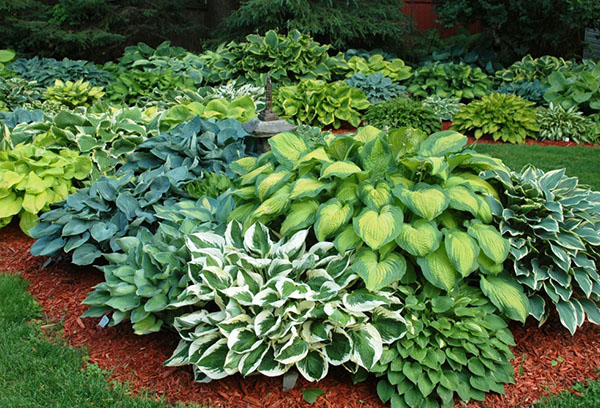
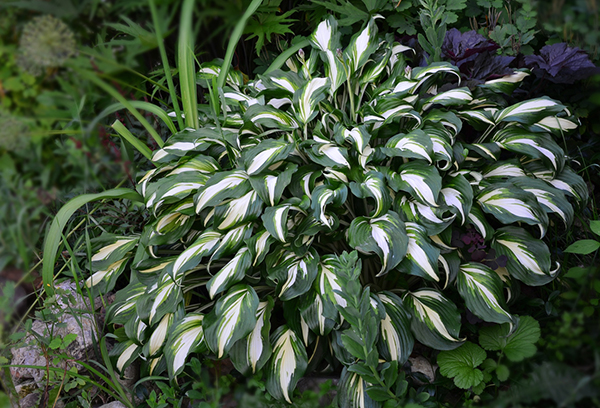
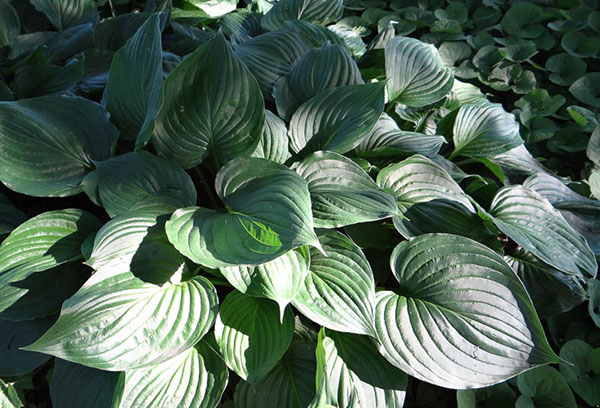
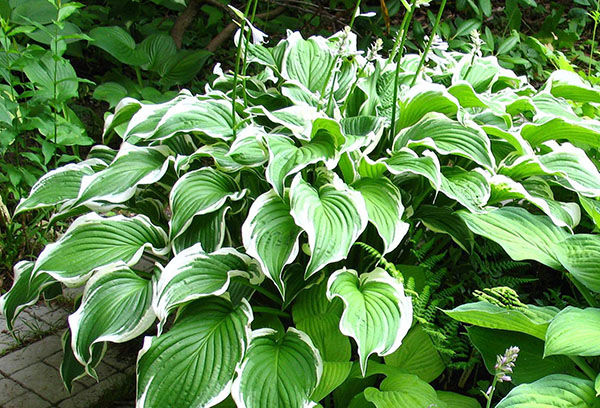
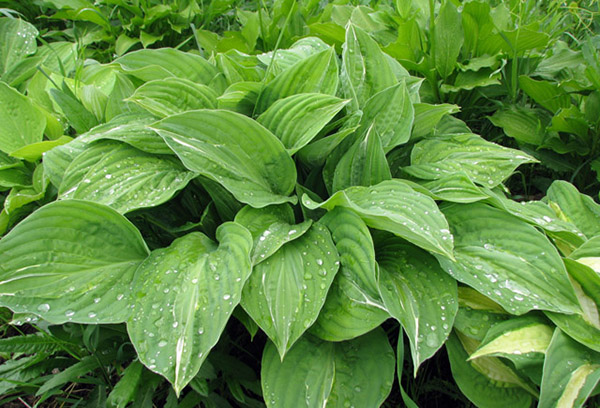
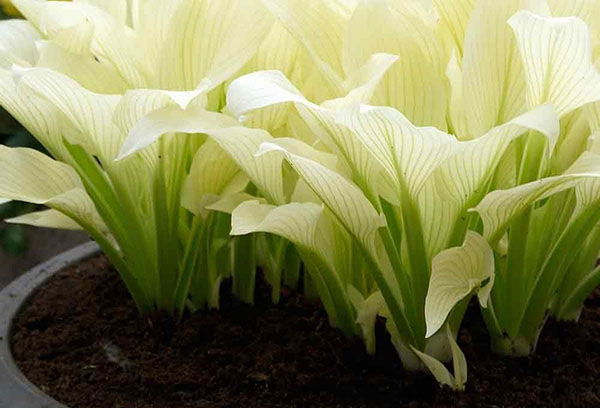
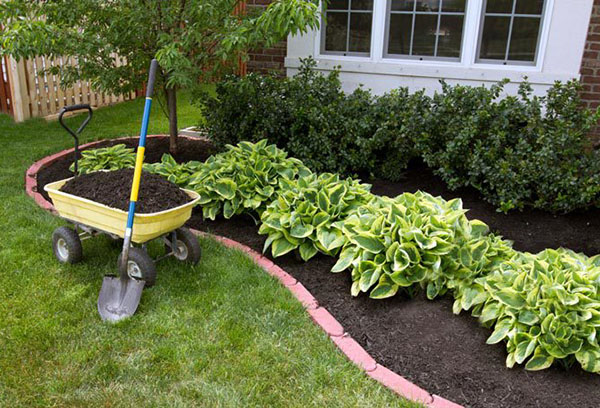
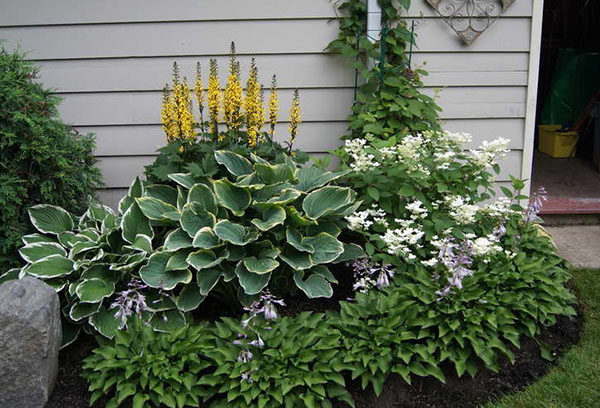
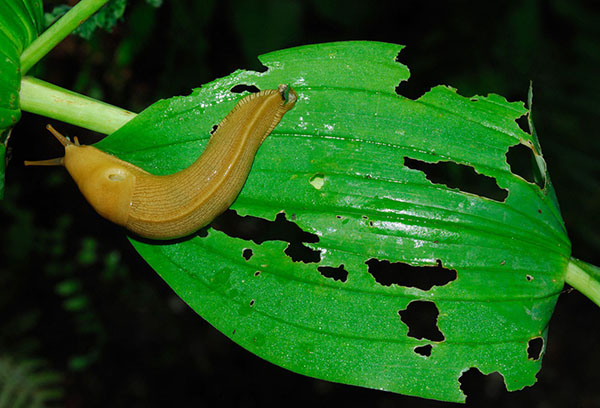
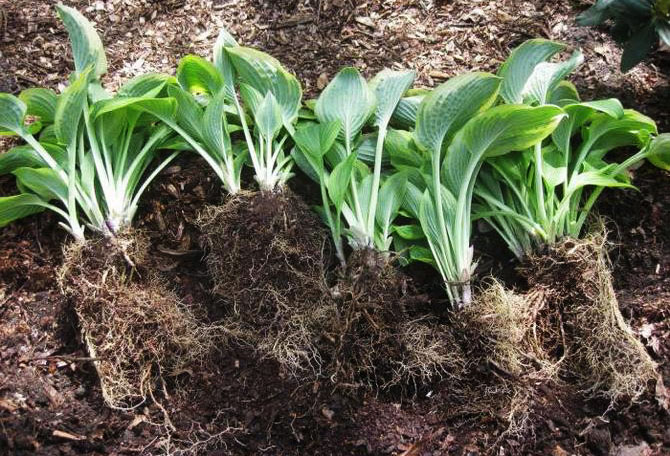

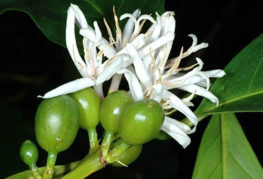
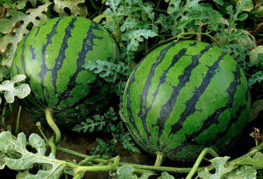
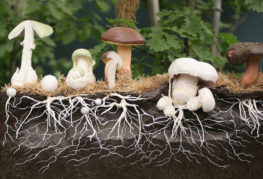
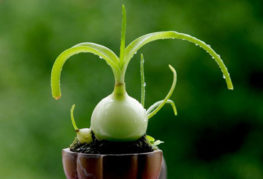
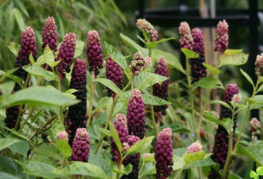

and will be published shortly.